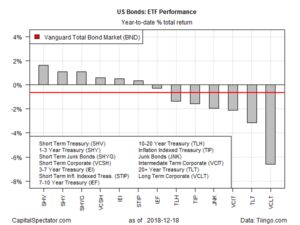
In doing so, the business can effectively manage cash flow, ensuring timely payment of bills, and collection of receivables. It involves reviewing the general ledger to confirm that all entries and balances are correct. On the other hand, general ledger reconciliation focuses on the internal review of accounts. This is critical because any discrepancies left unaddressed could distort a company’s understanding of its financial health.
- The objective of doing reconciliations to make sure that the internal cash register agrees with the bank statement.
- A common example of account reconciliation is comparing the general ledger to sub-ledgers, such as accounts payable or accounts receivable.
- Account reconciliation aids in financial reconciliation, ensuring that the numbers reported on the financial statements reflect the company’s true financial position.
- Ideally, it should be someone who is not involved in the day-to-day transactions that performs it to maintain objectivity and ensure a thorough review.
- By comparing these two sets of records, the business can identify discrepancies and adjust its internal records accordingly.
- This document summarizes banking and business activity, reconciling an entity’s bank account with its financial records.
For further confirmations and checks on how you can implement AI, don’t hesitate to sign up for a free consultation with our AI experts. A profit and loss statement displays revenue earned for depreciable asset definition that period, then subtracts the cost of goods sold, interest expense, and other operating expenses from the revenue to determine net income for the period. Upgrading to a paid membership gives you access to our extensive collection of plug-and-play Templates designed to power your performance—as well as CFI’s full course catalog and accredited Certification Programs.

Because the individual is fastidious about keeping receipts, they call the credit card to dispute the amounts. After an investigation, the credit card is found to have been compromised by a criminal who was able to obtain the company’s information and charge the individual’s credit card. The individual is reimbursed for the incorrect charges, the card is canceled, and the fraudulent activity stopped. At the end of the month, the account holder checks the transactions on the credit card bill with their credit card receipts and discovers that they have no receipts for some of the supposed lunch charges that appear on the bill.
Account reconciliation is a critical financial process that ensures the accuracy and consistency of an organization’s financial records. By comparing internal financial statements with external sources, such as bank statements, businesses can identify discrepancies, correct errors, and maintain financial integrity. In accounting, reconciliation refers to the practice of comparing two sets of financial records to make sure they are accurate and free from errors. The process typically involves comparing accounts in the company’s general ledger and sub-ledgers with external financial documents like invoices, receipts, and bank statements. Account reconciliation is the process of cross-checking a company’s financial records, like the general ledger (GL) and sub-ledgers (SL), with external documents, such as bank statements. Its purpose is to ensure accuracy and consistency of financial data, which is vital for informed decision-making and maintaining financial integrity.
Sign up for latest finance stories
Tick all transactions recorded in the cash book against similar transactions appearing in the bank statement. Make a list of all transactions in the bank statement that are not supported, i.e., are not supported by any evidence, such as a payment receipt. It’s also important to ensure you maintain detailed records of the three-way reconciliation accounting process.
Reconciliation in accounting best practices
The correction will appear in the future bank statement, but an adjustment is required in the current period’s bank reconciliation to reconcile the discrepancy. Reconciling an account is an accounting process that is used to ensure that the transactions in a company’s financial records are consistent with independent third party reports. Reconciliation confirms that the recorded sum leaving an account corresponds to the amount that’s been spent and that the two accounts are balanced at the end of the reporting period. Take note that you may need to keep an eye out for transactions that may not match immediately between the sets of records for which you may need qualitative characteristics of accounting information overview guide to make adjustments due to timing differences.
Types of Account Reconciliations
Even if you are using software that automatically downloads your monthly bank transactions, it’s still important to reconcile your accounts. By comparing these two sets of records, the business can identify discrepancies and adjust its internal records accordingly. This procedure ensures that the business’s internal records align with external data.
Reconciliation ensures that accounting records are accurate, by detecting bookkeeping errors and fraudulent transactions. The differences may sometimes be acceptable due to the timing of payments and deposits, but any unexplained differences may point to potential theft or misuse of funds. The company should ensure that any money coming into the company is recorded in both the cash register and bank statement.
What is a three-way trust reconciliation?
For lawyers, this process helps to ensure accuracy, consistency, transparency, and compliance. The purpose of reconciliation is to ensure the accuracy and ethics of a business’s financial records by comparing internal accounting records with external sources, such as bank records. This process helps detect errors, prevent fraud, ensure regulatory compliance, and provide reliable financial information for data-driven decision-making. Account reconciliation is necessary for asset, liability, and equity accounts since their balances are carried forward every year. During reconciliation, you should compare the transactions recorded in an internal record-keeping account against an external monthly statement from sources such as banks and credit card companies.
Some of the possible charges include ATM transaction charges, check-printing fees, overdrafts, bank interest, etc. The charges have already been majority shareholder: everything you need to know recorded by the bank, but the company does not know about them until the bank statement has been received. It is possible to have certain transactions that have been recorded as paid in the internal cash register but that do not appear as paid in the bank statement. An example of such a transaction is a check that has been issued but has yet to be cleared by the bank. Nearly a third of the businesses are gearing up to digitally transform their accounting operations using a slew of technologies, including cloud, AI, analytics, and RPA.

